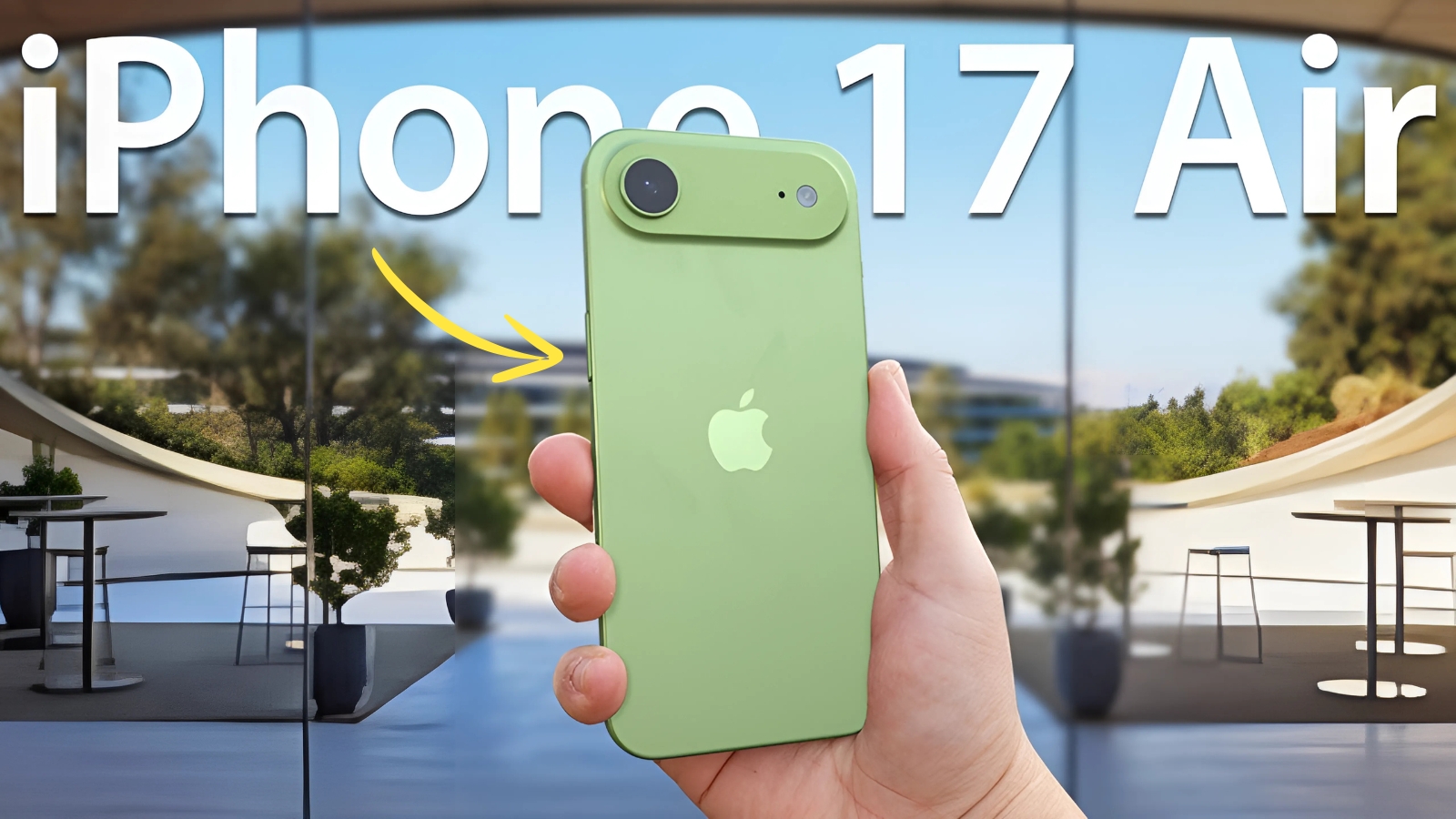iPhone 17 Air : The smartphone industry thrives on innovation, yet recent years have seen mostly incremental updates rather than groundbreaking changes. That could shift dramatically if recent reports about Apple’s iPhone 17 Air prove accurate. Sources from within Apple’s supply chain suggest the company is developing its most ambitious iPhone redesign since the original launched nearly two decades ago, prioritizing extreme portability without sacrificing the premium features users expect.
Rethinking What’s Possible in Smartphone Engineering
Manufacturing partners in Asia have begun testing components for what insiders describe as an engineering marvel. The iPhone 17 Air reportedly measures an astounding 5.5 millimeters at its thickest point, making it thinner than many credit cards stacked together. Achieving this requires completely reimagining internal component layouts, with engineers utilizing every cubic millimeter of space through revolutionary stacking techniques borrowed from aerospace design.
The challenge extends beyond simple miniaturization. Each component must maintain optimal performance while generating minimal heat in such confined spaces. Apple’s solution involves new thermal management systems using graphene-based materials that conduct heat away from processors more efficiently than traditional copper heat pipes. This allows powerful components to operate at full capacity without throttling performance or creating uncomfortable hot spots during extended use.

Screen Technology That Defies Current Limitations
Perhaps the most impressive feat involves fitting a stunning display into such a slim profile. The 6.6-inch panel utilizes breakthrough LTPO OLED technology that’s 40% thinner than current generation screens while delivering superior brightness levels exceeding 2,500 nits for clear outdoor visibility. Color accuracy reaches new heights with support for multiple HDR standards and a wider color gamut that professional photographers and videographers will appreciate.
The long-rumored under-display camera finally becomes reality in the iPhone 17 Air. Apple’s implementation uses specialized pixel arrangements that become transparent when the front camera activates, maintaining image quality comparable to traditional camera cutouts. This achievement eliminates any screen interruptions, creating an immersive edge-to-edge experience whether watching videos, playing games, or simply browsing photos.
Processing Power That Defies Physics
Despite spatial constraints, the iPhone 17 Air houses Apple’s next-generation A19 Bionic processor. Built on an advanced 2-nanometer architecture, this chip delivers desktop-class performance while sipping power more efficiently than ever. Early testing indicates the A19 handles complex tasks like 8K video editing and real-time ray tracing in games without breaking a sweat, all while maintaining battery life that matches or exceeds current models.
Machine learning capabilities receive particular emphasis, with a dedicated neural processing unit handling AI tasks sixteen times faster than previous generations. This enables features like real-time language translation during video calls, advanced computational photography that rivals professional cameras, and predictive text that seems to read users’ minds. These capabilities process entirely on-device, preserving privacy while delivering instantaneous results.
Revolutionary Camera System in Minimal Space
Photographers often worry that thinner devices mean compromised camera quality, but Apple appears to have solved this puzzle ingeniously. The main camera sensor, despite the space constraints, actually grows larger than current models by utilizing a periscope-style arrangement that runs horizontally through the phone’s body. This configuration enables a massive 1-inch sensor that captures stunning detail in challenging lighting conditions.
The zoom capabilities seem almost impossible given the form factor. Using folded optics similar to submarine periscopes, the iPhone 17 Air achieves 10x optical zoom range without any external lens protrusion. Advanced stabilization systems compensate for hand movement across the entire zoom range, ensuring sharp photos even at maximum magnification. Video creators benefit from these advances too, with 8K recording at 60 frames per second becoming standard across all lens focal lengths.
Bajaj Platina 100 – 60kmpl mileage bike launch with sporty look
Power Management Breakthrough
Battery technology represents the most significant engineering achievement in the iPhone 17 Air. Apple partnered with leading battery researchers to develop silicon-nanowire anodes that store 40% more energy than traditional lithium-ion cells in the same volume. Combined with the A19’s efficiency improvements and intelligent power management that learns usage patterns, users can expect all-day battery life despite the ultra-thin design.
Charging speeds increase dramatically too, with 50W wired charging replenishing the battery to 80% in just fifteen minutes. Wireless charging through an improved MagSafe system reaches 30W, while reverse wireless charging finally arrives, allowing the iPhone to power AirPods or Apple Watch in emergencies. Some prototypes even test ambient light charging that harvests energy from indoor lighting, though this feature might not make the final release.
iPhone 17 Air Market Implications and Industry Response
If Apple successfully launches the iPhone 17 Air as described, it could spark the most significant smartphone design race in years. Competitors would scramble to match Apple’s engineering achievements, potentially accelerating innovation across the entire industry. Premium smartphone buyers have shown willingness to pay for genuine innovation, suggesting strong market demand despite an expected starting price exceeding $1,400.
The iPhone 17 Air represents more than just another annual upgrade. It demonstrates that meaningful innovation in smartphone design remains possible when companies commit resources to pushing boundaries rather than playing it safe. Whether consumers embrace extreme thinness over other priorities remains to be seen, but Apple’s bold vision could reshape our expectations for what smartphones can achieve.
